Because the mouth is a region where changes can be easily seen, oral cancer can be detected in its early stages. Performing a self examination regularly will help in the early recognition and detection of oral cancer, and increase the chance for cure.
Factors That May Cause Cancer
Research has identified a number of factors that may contribute to the development of oral cancer.The most common are the use of tobacco and alcohol. Others include poor oral hygiene, irritation caused by ill-fitting dentures and rough surfaces on teeth, poor nutrition, some chronic infections and combinations of these factors.
Studies have shown that the death rate from oral cancer is about four times higher for cigarette smokers than for nonsmokers. It is also widely believed in the medical field that the heat generated by smoking pipes and cigars irritates the mouth and can lead to lip cancer.
Those at an especially high risk of developing oral cancer are over 40 years of age, heavy drinkers and smokers, or users of smokeless tobacco, including snuff.
Perform a Self-Exam Monthly
Oral and maxillofacial surgeons recommend that everyone perform an oral cancer self-exam each month. If you are at high risk for oral cancer — smoker, consumer of alcohol, user of smokeless tobacco, or snuff — you should see your general dentist or oral and maxillofacial surgeon for an annual exam.
An oral examination is performed using a bright light and a mirror:
- remove any dentures
- look and feel inside the lips and the front of gums
- tilt head back to inspect and feel the roof of your mouth
- pull the cheek out to see its inside surface as well as the back of the gums
- pull out your tongue and look at all of its surfaces
- feel for lumps or enlarged lymph nodes (glands) in both sides of the neck including under the lower jaw
Early Detection and Treatment Provide a Better Chance for Cure
When performing an oral cancer self-examination, look for the following:
- white patches of the oral tissues — leukoplakia
- red patches — erythroplakia
- red and white patches — erythroleukoplakia
- a sore that fails to heal and bleeds easily
- an abnormal lump or thickening of the tissues of the mouth
- chronic sore throat or hoarseness
- difficulty in chewing or swallowing
- a mass or lump in the neck
See your oral and maxillofacial surgeon if you have any of these signs. If the oral and maxillofacial surgeon agrees that something looks suspicious, a biopsy may be recommended. A biopsy involves the removal of a piece of the suspicious tissue, which is then sent to a pathology laboratory for a microscopic examination that will accurately diagnose the problem. The biopsy report not only helps establish a diagnosis, but also enables the doctor to develop a specific plan of treatment.
A Word About Oral Care
Keep in mind that your mouth is one of your body’s most important early warning systems. Don’t ignore any suspicious lumps or sores. Should you discover something, make an appointment for a prompt examination. Early treatment may well be the key to complete recovery.
© American Association of Oral and Maxillofacial Surgeons (AAOMS). All rights reserved.
Reprinted with permission from American Association of Oral and Maxillofacial Surgeons.

Treating our patients as we would our own families.
Lake Geneva Oral & Maxillofacial Surgery
Doctors Conlon, Bruksch, Ozment, Richard, Fay, and Schmidt
312 Center St. | Lake Geneva, WI 53147
Phone: 262-248-8766 | Fax: 262-248-6790
Office Hours
Monday – Friday 8:00 am – 5:00 pm
Saturday 8:00 am – noon
Hours may vary occasionally due to hospital surgery and emergencies.




